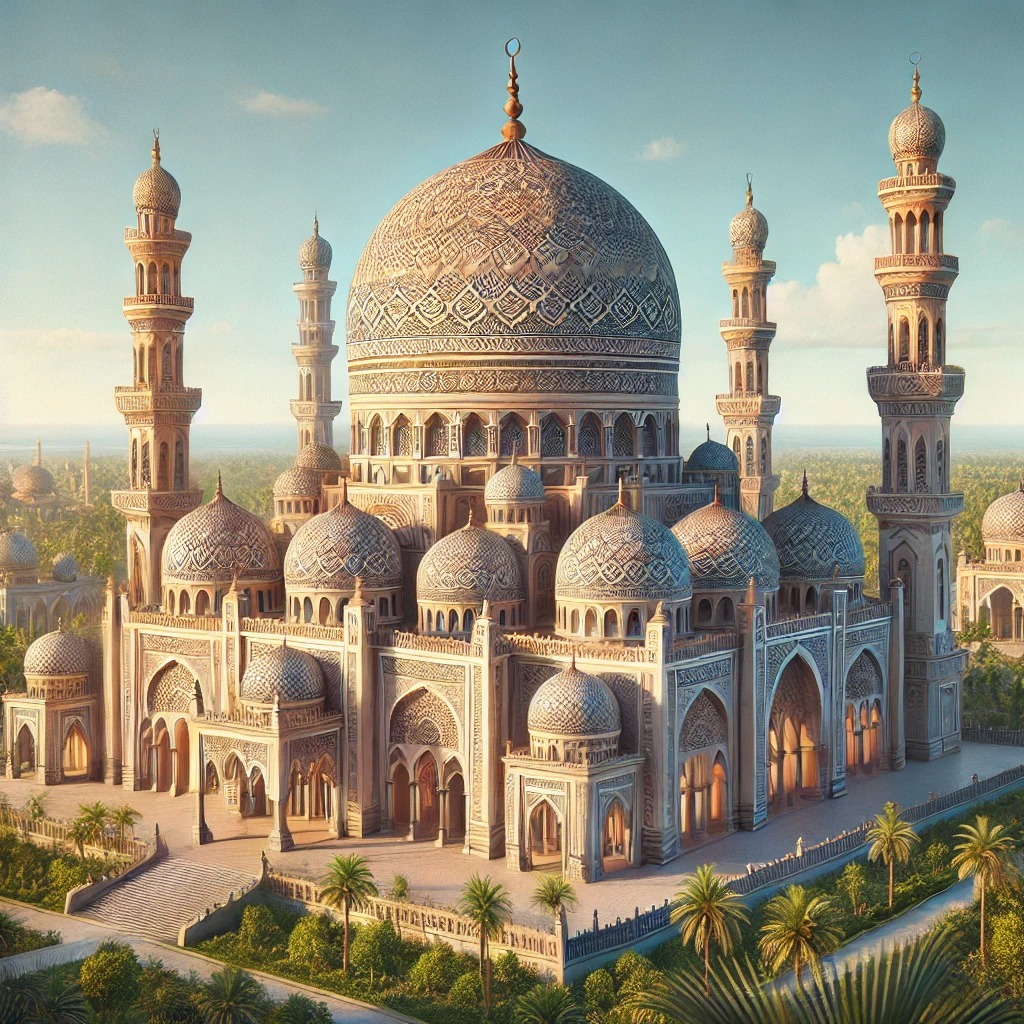


Nestled in the quiet village of Bihar Mangla Khand within Delapeer tehsil, Noorani Masjid stands as a modest yet revered Islamic site in Bareilly district, Uttar Pradesh. This unassuming mosque serves as a spiritual anchor for the local Muslim community, embodying the enduring legacy of Islamic devotion in the fertile plains of Rohilkhand. With its simple architecture and serene ambiance, it hosts daily prayers and occasional communal gatherings, reflecting the harmonious blend of faith and rural life in northern India.
Bareilly, in the heart of Uttar Pradesh's Rohilkhand region, has been a crucible of Islamic culture since the 16th century, when Mughal governors like Makrand Ray laid its foundations in 1537. The arrival of Rohilla Afghans in the 18th century further enriched this tapestry, infusing the area with Pashtun architectural and devotional traditions that emphasized community mosques as centers of faith and solidarity. It is within this historical continuum that Noorani Masjid emerges as a quiet emblem of resilience, embodying the unadorned piety that characterizes many of Rohilkhand's lesser-known sacred sites. Situated in the Biharman Nagla area—a semi-rural enclave named possibly after Bihari migrant communities that settled here during the colonial era—the mosque occupies a central role in the daily rhythms of local Muslim life. Its construction in the 1920s, a time of social flux under British rule, coincided with a wave of grassroots religious initiatives among Rohilla descendants and other Sunni families seeking to preserve their spiritual identity amid economic shifts and partition anxieties. Though not a grand imperial edifice like Delhi's Jama Masjid, Noorani Masjid's origins lie in the hands of local patrons, likely including traders and farmers from the Delapeer block, who pooled resources to erect a space dedicated to collective salah (prayer). Historical records from regional administrative surveys, such as those documenting village-level institutions in the 1930s, allude to such modest builds as vital to maintaining Islamic observance in peripheral urban fringes. Architecturally, Noorani Masjid adheres to the subdued vernacular style prevalent in 20th-century Rohilkhand mosques, diverging from the ornate minarets and domes of Mughal-era landmarks. The structure features a rectangular prayer hall oriented toward the qibla (direction of Mecca), constructed from locally sourced bricks and lime mortar, with whitewashed walls that evoke purity and simplicity—a hallmark of Sufi-influenced designs in the region. A modest mihrab (niche indicating the qibla) adorns the western wall, often inscribed with Quranic verses in simple Urdu calligraphy, while the minbar (pulpit) serves as the focal point for Friday sermons, drawing congregants from nearby hamlets like Saidpur Hakins and Rajendra Nagar. Flanking the entrance is a small ablution area (wudu khana), underscoring the mosque's practical devotion to ritual cleanliness. Though expansions in the post-independence era added a basic madrasa annex for Quranic instruction, the core edifice retains its original footprint, measuring approximately 50 by 30 feet, accommodating up to 150 worshippers during peak times like Eid prayers. What elevates Noorani Masjid beyond mere functionality is its role as a living archive of Bareilly's Sunni Barelvi traditions, rooted in the legacy of Imam Ahmad Raza Khan (1856–1921), whose teachings from nearby Bareilly Sharif continue to resonate here. The mosque hosts regular mehfil-e-naat (devotional poetry recitals) and urs commemorations, fostering a sense of continuity with Rohilkhand's Sufi past, where shrines and mosques intertwined to promote tawhid (unity of God) and communal harmony. Unlike more touristed sites, such as the opulent Dargah Ala Hazrat, Noorani Masjid remains an intimate space, its courtyard shaded by neem trees that whisper of generations past. Local lore, preserved in oral histories among elders of Biharman Nagla, recounts how the mosque withstood the communal tensions of Partition, serving as a refuge for displaced families and symbolizing Islam's adaptive spirit in agrarian Uttar Pradesh. Today, as Bareilly navigates modernity—its skyline dotted with new developments while clinging to its zari embroidery heritage—Noorani Masjid endures as a beacon of quiet reverence. Managed by a local waqf committee, it continues to host five daily prayers, drawing a diverse congregation of Pathan descendants, Bihari migrants, and urban commuters from the adjacent Izzatnagar railway hub. In an era of rapid urbanization, this unassuming sanctuary reminds visitors of the profound humility at the heart of Islamic historical sites in India: not in grandeur, but in the steadfast echo of adhan calling the faithful to reflection and unity. For those tracing the subtle threads of Rohilkhand's Islamic legacy, Noorani Masjid offers a poignant pause, inviting contemplation on faith's quiet persistence amid time's relentless march.
Year of Built: Not Available
Address: 9FX2+922, Bihar Mannagla Khand, Bareilly, 243122
Country: India
State: Uttar Pradesh
District: Bareilly
Pincode: 243122
Longitude: 79.410°E
Latitude: 28.368°N